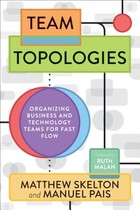The Great Migration: How Microsoft Office Escaped the Dark Ages of Source Depot
When we talk about developer productivity at scale, few stories are as compelling as Microsoft Office's migration from Source Depot to Git. This wasn't just a tool swap—it was a fundamental transformation that saved countless hours of developer time and modernized one of the world's largest codebases.
The Legacy of Source Depot
In the early 2000s, Microsoft faced a unique challenge. With Windows growing to millions of lines of code and Git still years away from existence, the company built Source Depot—a custom version control system based on Perforce technology. While revolutionary for its time, Source Depot became increasingly painful as development practices evolved.
The system's limitations were stark: a complete repository checkout took hours, branching required careful planning and coordination, and everything depended on network connectivity. Developers often joked that checking out code was a perfect excuse for an extended coffee break.
The Technical Debt Reality
What made this migration particularly complex wasn't just the size of the codebase—it was the deep integration into Microsoft's entire development ecosystem. Source Depot wasn't merely storing code; it was the foundation for build systems, release pipelines, and countless developer workflows that had evolved over decades.
The challenge became even more nuanced when considering that Git's distributed model couldn't initially handle repositories of Office's scale without significant infrastructure changes. Microsoft had to develop VFS for Git (now Scalar) to make the migration technically feasible, essentially creating a new filesystem layer to handle massive repositories efficiently.
The Human Factor
Perhaps the most interesting aspect of this migration was the human element. Hundreds of engineers, many of whom had never used Git professionally, needed to learn entirely new workflows. The migration team implemented a multi-channel communication strategy, ensuring critical information reached developers through weekly emails, team presentations, documentation, and office hours.
This approach highlights a crucial lesson in enterprise migrations: technical solutions are only half the battle. Change management and developer education often determine success more than the underlying technology.
Lessons for Modern Migrations
The Office migration offers valuable insights for any organization considering large-scale tooling changes:
- Gradual transition beats big bang: The migration took years, allowing teams to adapt incrementally
- Infrastructure must evolve: New tools often require supporting infrastructure (like VFS for Git)
- Communication is multiplier work: Effective change management amplifies technical improvements
- Legacy integration matters: Understanding existing workflows prevents disruption
The Multiplier Effect
As the original author noted, developer productivity improvements are "multiplier work." When you save minutes from hundreds of developers daily, you're effectively saving years of human effort. The Office migration exemplifies this principle—transforming painful, slow workflows into modern, efficient ones that continue paying dividends.
The irony isn't lost that Microsoft, now a major contributor to Git and owner of GitHub, once relied on a completely different paradigm. This transformation reflects not just technological evolution, but organizational adaptability.
Conclusion
The migration from Source Depot to Git represents more than a technical upgrade—it's a case study in managing large-scale change while maintaining productivity. As development tools continue evolving rapidly, the lessons from this migration remain relevant: successful transitions require technical innovation, careful planning, and above all, deep consideration of the human elements that make technology truly effective.
For organizations still using legacy development tools, the Office migration proves that even the most entrenched systems can evolve—but success requires patience, investment, and recognition that people, not just processes, must change too.




